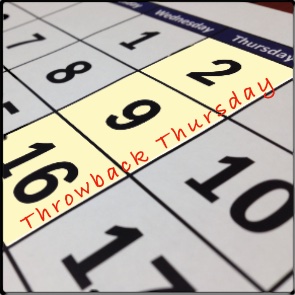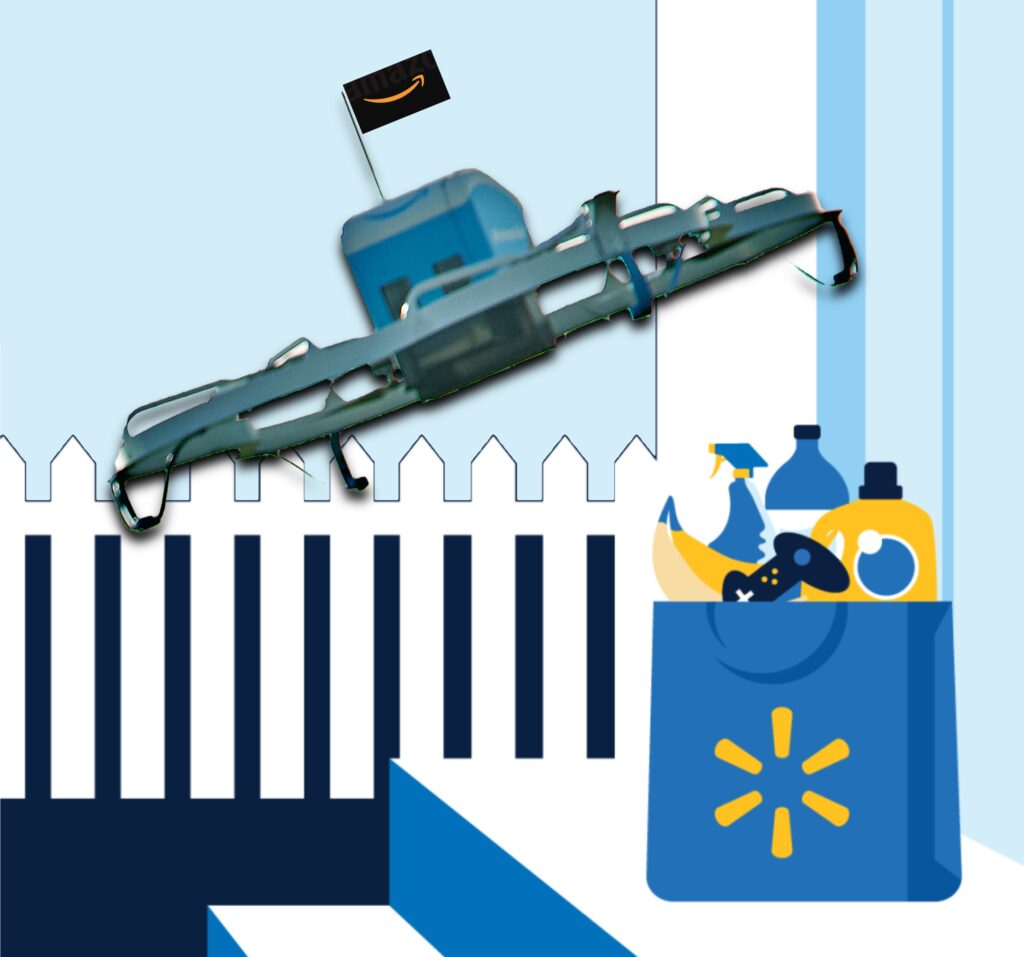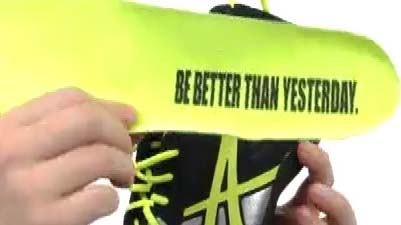
Sep 20
17
TBT: October is National Cyber Security Awareness Month (And it’s not too late to put it to work)


I am the first to admit that when it comes names of commemorative months, National Cyber Security Awareness Month isn’t the sexiest. Reducing it to the initialism NCSAM makes it easier to write, but not easier to pronounce—En-see-sam? Nik-sam? Ink-sam?—and it it doesn’t help in the sexiness department, either.
Perhaps that’s why, even though NCSAM has been around since President Obama signed it into being 14 years ago, it doesn’t generate much press beyond sundry institutional posts.
Missed opportunity
And that’s a curious thing, considering security concerns are keeping a good deal of people from opting into and using digital banking. Letting October pass without taking advantage of NCSAM is a missed marketing—and service—opportunity for financial institutions.
Some may hesitate to raise the topic of cyber fraud et al to avoid instilling fears where none existed. But the reality is that the fears already exist and are in fact pervasive. A Fiserv blog post earlier this summer entitled “Why It Pays to Address Consumers’ Concerns About Bill Pay Security” reported (disclosure: Fiserv is my employer):
Among consumers who haven’t used mobile banking in the past 30 days, 57 percent cite security as a concern … At 81 percent, personal data and identity theft is the most common security concern with bills, among all those who are at least somewhat concerned about security and billing. Data breaches (65 percent) [and] Internet security (39 percent) … are other top concerns.
It has become something of a given that reticence when it comes to embracing new technology skews older. Were that the problem with digital banking enrollment and use, a plausible solution (and I beg your forgiveness for saying it with such directness) might be to wait until Millennials have replaced Boomers as the older generation. But this time it turns out that Boomers aren’t necessarily the holdup. For Millennials, technology that connects a game to a TV is one thing, whereas technology that connects a handheld device to their money is quite another. To wit, the Fiserv study also found that …
… early Millennials involved in managing bills are the most likely to have security concerns. When thinking about payment security, 64 percent of those ages 18 to 26 are worried about the safety of paying bills and 49 percent say they’re worried about receiving them.
October is nearly upon us, but it’s not too late to capitalize on NCSAM. After all, like other months, it’s a whole month long. And, happily, there’s a way to put NCSAM to work for you that is a win-win, that is, benefitting clients and financial institutions, yet won’t require much investment in the way of esearch, production, and person-hours.
NCSAM as a marketing—and service—opportunity
Having individual control goes a long way toward alleviating fear. And while great respect for the dangers of online fraud is well advised, there is a good deal that clients can do to increase their control over their online security. Furnishing that information is a great service to clients, and for banks it can mean fewer future cases to resolve. It’s also a great way to make clients view a bank in a favorable light for its thoughtfulness in having provided the information.
While it may be too late to launch a full-blown campaign, other, quick-turnaround PR opportunities are within reach. It should be an easy matter to write up easy-to-implement security tips and distribute them via press releases, newsletter or e-letter articles, and email to clients.
Nor is there any need to scurry about digging up content. Many organizations have already done that for you. Cisco, for instance, offers a wealth of blogs on the subject. The National Cyber Security Alliance maintains the website StaySafeOnline.org and makes its content available for anyone’s use. Of particular help are pages such as:
- Online safety basics
- Securing key accounts and devices
- Tips regarding identity theft and fraud
- Resources pertaining to cyber bullying and harassment
- Online resources, e.g., help from social media, search engines, Internet service providers, government organizations, etc.
You might also check with your state university. The University of California has created an online National Cyber Security Awareness Month Toolkit. In my home state, the University of Utah is doing likewise. So is the University of Richmond.
While you’re at it
Besides providing safety tips, be sure to highlight the technology and programs your financial institution has in place for protecting clients. Familiarity may have rendered them banal to you, but to clients they are new, fascinating—and reassuring.
Of course you’ll need to run all material by Compliance and Legal. Just don’t let them rewrite or even edit. To do so would be to ensure impenetrable copy no client will read and that, therefore, will do no good. Ask them to explain what needs to change, and why, and then pay a real writer to do the revising. (If your Compliance officers and attorneys fancy themselves writers, as many do, steel your resolve and stick to your guns.)
The number of financial institutions that miss the chance to capitalize on NCSAM surprises me, but their lapse has its positive side. The few financial institutions that jump on this opportunity will be the ones that stand out.
Sep 20
14
Walmart takes on Prime, while Amazon drones on

Here’s how PYMNTS.com describes Walmart Plus*, Walmart’s new delivery program, set to debut tomorrow:
For $98 annually or $12.95 a month, members will receive unlimited, same-day free delivery, Scan & Go on the Walmart app that allows customers to scan their items as they shop and pay with Walmart Pay for quick and touch-free payments and a 5 cents discount on gas.
Feature for feature, Walmart could well have branded the new service “Walmart Prime” were it not for pesky trademark laws. After all, Amazon Prime is similarly priced at $12.99 a month or $119 a year and promises a similar lineup of benefits:
Unlimited Two-Day Shipping on over 100 million items and One-Day Shipping and Same-Day Delivery in over 10,000 cities and towns as well as 2-Hour Delivery with Prime Now in select cities.
There are, however, notable differences between the services.
Notable differences
Prime offers an advantage in the form of access to Prime Video and Amazon Music, whereas Walmart Plus has no analogous offering.
Yet Walmart Plus offers advantages of its own. Same-day delivery tends to be the exception for Prime, depending on where you live, whereas it promises to be largely the rule for Plus. Walmart is better equipped than Amazon to pull off that benefit because, no matter where you live, you can probably throw a stick and hit three Supercenters and a Neighborhood Market without aiming.
And Walmart has the advantage in grocery deliveries. Walmart offers a vast selection of groceries, whereas Amazon Pantry’s selection is limited. Although Amazon acquiree Whole Foods Markets offers free, same-day home delivery with $35 minimum, availability is tied to its 487 U.S. locations, whereas Walmart’s 4,674 U.S. locations—each a virtual local warehouse—are all but everywhere.** Walmart is known for low prices; Whole Foods, not so much.
Yet for Walmart, being the low-price leader may be a two-edged sword. People attracted to Walmart’s low pricing may balk at paying $12.95 a month plus tip for the privilege of shopping from home. And, like Whole Foods, Walmart requires a $35 minimum purchase for free delivery.
Heading off Amazon
Walmart is wise to take on Prime at this time, even though, according to the National Retail Association, Walmart’s $510 billion in annual revenue makes it the world’s largest retailer. Amazon is its closest threat, coming in at a little under half that amount, a mere $233 billion. (A distant third place goes to a German discount grocer not familiar to most Americans, the Schwartz Group, with $123 billion, a little more than half of Amazon’s revenues.)
So Walmart has quite the lead. Nonetheless, as I have noted before in this space, giants can topple—think Sears, WordPerfect, Kodak, or Motorola. Even if you happen to be Walmart, it’s wise not to engage in laurel-sitting.
Moreover, home delivery is no longer the wave of the future, but the wave of the present. With a worldwide pandemic still afoot, people who can stay home are advised to do so. Retailers who cannot accommodate a public loath to show up in person must surely fail.
Is it a bird? Is it a plane? It’s an Amazon drone!
There’s no disputing that Amazon has led the world in home delivery. And now Amazon is ready to blaze new trails—that is, new airways. CNN reported on August 31 that Amazon is at last ready to “launch” its long-awaited drone delivery service:
Amazon received federal approval to operate its fleet of Prime Air delivery drones, the Federal Aviation Administration said Monday, a milestone that allows the company to expand unmanned package delivery. The approval will give Amazon broad privileges to “safely and efficiently deliver packages to customers,” the agency said … [giving] Amazon the ability to carry property on small drones “beyond the visual line of sight” of the operator. Amazon said it will use the FAA’s certification to begin testing customer deliveries.
The eventual goal, Amazon Prime Air VP David Carbon told CNN, is 30-minute deliveries.
I cannot help wondering how Amazon plans to deal with dogs that love to chase moving objects, which is most dogs. Surely Carbon and his crew have thought that one through; but it’s not hard to envision alert Labrador retrievers joyously snatching drones from the air and gleefully burying them in the backyard.
Whether delivered by van or drone, I am all for the growth of home delivery. No matter which retailers lead, the payments industry always wins.
*A day or two later, an ad for Walmart Plus showed up in my Facebook feed. Walmart’s joining other advertisers in boycotting Facebook for the latter’s refusal to fact-check political ads was, apparently, short-lived.
**Source: Data company ScrapeHero. See https://www.scrapehero.com/whole-foods-market-locations/
Sep 20
10
TBT: When it comes to innovation, think small


Yesterday when my wife kicked off her ASICS workout shoes, I noticed this line on the removable insole: “Be better than yesterday.”
That, I realized, says it.
The financial services industry is obsessed with innovation. Rightly so, for we cannot let the competition outstrip us. But when we limit innovation to mean the next big shiny new toy, we have a forest-for-the-trees thing going on.
Shiny new toys that take the world by storm are rare. Smaller, “better than yesterday” changes are far more common, and they are no less able to take the world by storm.
For a low-tech example, consider a mid 1980s innovation. There was nothing shiny or even new about a bottleneck with a twist-off cap. But placing it atop a one-quart container of motor oil was new. This tiny change overhauled the industry. It made the round oilcan obsolete and grew the home oil-change market by making the product easier to handle.
For a high-tech example, observe the people lined up outside your nearest Apple Store, waiting to hand over a substantial wad of cash for the just-released iPhone 6. Let’s be honest. The 6 is shiny, but it’s hardly new. It’s pretty much a 5 with added doodads. And the 5 was pretty much an elongated 4 with added doodads. Purists will no doubt revile me for trivializing, but come on. Even today, the 4 meets the basic need. Die-hards who haven’t upgraded miss out on little in the way of functionality. Apple, it seems, is the master of effecting big change by thinking small.
For another high-tech example, consider movies sold for home viewing. My wife and I are blessed with two lovely daughters who make us suffer when they’re bored on long trips. In their defense, I should point out that they keep up the whining only 99 percent of the time. So, even though we own a bunch of kids’ movies on DVD, we paid for the same movies over again so the kids can watch them on their tablets and my wife and I can ride a few miles in peace. In order to sell us the same movies twice, no studio had to invent a device or secure new distribution rights. All they needed was a modest advance in distribution.
That, too, is the power of thinking small.
The lesson for bankers is, sure, keep a sharp eye for the next shiny new toy, but don’t overlook “better than yesterday.” A modest innovation might be under your nose right now, and it might just change the world.

The financial services industry has never been short on clichés. There’s the diminutive clerk wearing a green visor and sleeve garters. The rotund, cigar-chomping financier. The heartless, mustache-twirling userer.
Not to be overlooked are clichés the industry brought upon itself through marketing. There’s the “friendly banker.” (“If the banks are so friendly,” comedian Alan King quipped, “how come they chain down the pens?”) There’s the “your partner” bank. (Banks using that one would do well to look up partner in the dictionary.) And let’s not forget toasters, which, for whatever reason, came to symbolize the golden age of bank incentive offers.
The toaster giveaway cliché had its start when financial institutions took a page from direct response marketing playbook and began serving up incentive offers. A new account or loan could net you a TV, a household appliance, or your choice of a .12-gauge shotgun or .270-caliber rifle. (“Don’t you think it’s a little dangerous handing out guns in a bank?” asks Michael Moore, in his film Bowling for Columbine, as a banker hands him a rifle. The exchange was pure fiction. Gun-offering banks didn’t hand out weapons on bank premises. They arranged delivery or handed out certificates to be redeemed elsewhere).
The power of the incentive offer
Blogger turned ETF manager Eddy Elfenbein was partially correct when he wrote:
The reason banks offered toasters to new accounts wasn’t due to bad marketing, but due to outdated regulations. That’s the only way they could pass cost savings on to depositors. Free toasters from banks weren’t some happy relic of a bygone era, they were the one of reasons why the modern financial world came about. Interest rates were regulated and you couldn’t even pay interest on a checking account.
The regulatory choke-hold certainly played its part, but Elfenbein overlooks the power of the incentive offer to motivate purchase. Indeed, I take exception to “bad marketing.” A properly deployed freebie is good marketing. It cannot make you buy what you don’t want, but when it comes to a product you’re considering, the right freebie can make the difference between resolving to buy someday and versus buying now.
You’d be surprised at how often what turns out to be “the right freebie” proves counter-intuitive. In his book Of Marketing and Emasculated Goats, direct marketer Steve Cuno wrote:
Whether for small or big-ticket items, a compelling incentive will multiply response. I doubled natural gas fireplace sales by offering a free jar of honey for visiting a showroom. The jar of honey, incidentally, retailed for only one dollar. For an industrial manufacturer, I tripled sales by offering a $20 Victoria’s Secret gift certificate. Even though (or perhaps because) most of that client’s customers were male.
Whatever became of the free toaster?
Nowadays, on the increasingly rare occasion you see someone walk into a bank, you rarely see that person exit the bank with a toaster. But incentive offers haven’t disappeared. They have merely evolved. For instance:
• Instead of a toaster, an offer of a few hundred dollars might motivate you to open a checking account on condition of maintaining a specified minimum balance for a specified amount of time.
• These days it’s nigh unto impossible to find a bank card that doesn’t offer points redeemable for merchandise or cash.
• And “no interest for six months” is arguably a very expensive toaster in a new suit of clothes.
Donating to a cause isn’t an incentive offer
Sometimes you’ll see a quasi-offer in the form of “for every new account, we’ll donate to [insert charity here].” As I wrote last week, that seems to be working for upstart online insurance company Lemonade with its Giveback program.
But if it’s working, it’s not working as an incentive offer. Offers work by playing to the desire to get something for nothing, to eke a little extra out of the marketer “… if I act now.” The promise of a donation to a cause, no matter how worthy, doesn’t play to that desire. Lemonade’s Giveback program alleviates concerns about overcharging and delayed claims. That’s less of an incentive and more of a reassurance.
Supporting a cause is laudable on its own merits, of course, and it can make for good PR. It’s a classier way of publicizing philanthropy than a press release blatantly boasting “We just gave $X million to …”
Donate to a cause because you support it, not because you expect it to increase sales.
Sep 20
3
TBT: Bank metamorphosis for fun and profit


You will doubtless agree that morphing beats going the way of the typewriter. The good news for banks is that morphing in a digital environment represents more than survival. It represents exciting opportunities to prosper in newer and bigger ways.
The digital age has not rolled forth without casualties. Type-writers, maps, encyclopedias, calculators, film cameras, digital cameras, camcorders, cash registers, books, newspapers, music CDs, and more are found among the metamorphosed, endangered, severely wounded, and just plain gone.
If a building with a teller line, offices, an ATM and a drive-up is the caterpillar, then the butterfly is a device about the size of a deck of cards, except way thinner, and it rides around in purses and pockets. Some banks are now succeeding as butterflies only, but it doesn’t go both ways: No bank can remain a caterpillar and expect to be around much longer.
Change is never convenient, but this time the benefits outweigh
Share of wallet trends steadily up among digital banking clients. A study by Fiserv showed share of wallet for digital clients compared with branch-only clients at about two-to-one. And that correlated with increased longevity: Bank and credit union branch-only clients dropped off at about twice and thrice, respectively, the rate of mobile banking members.
I need hardly point out (but will anyway) that increased share-of-wallet makes clients less likely to dump you for a competitor. Hopefully that’s due to meeting demand with digital services; but on the more banal side, it can be due to the fact that moving accounts, already a pain, becomes a royal pain when clients also have to install, set up, and learn new apps. “It’s a pain to leave” isn’t quite the same as “my bank has won my affection forever,” but it’s nothing to rue, either.
Longevity aside, you’d hope that greater digital share would correlate with a rise in fee revenue, and that is indeed the case. The above-referenced study showed that mobile users generated 72 percent higher revenues than branch-only customers. Fee interchange fee revenue trended up, too, thanks to a positive correlation between mobile banking use, debit and credit card point-of-sale transactions, ATM use, and ACH transactions.
Meanwhile, apps like Zelle and Popmoney® present new opportunities for banks to generate fee revenue. These apps and others like them come with in-place fees as the norm, and, so far, clients haven’t rebelled. This can help compensate for and may someday overtake market forces making it difficult for banks to charge for bill pay.
I could go on about the growth and revenue opportunities that morphing with the times promise, over and above not ending up on the Digital Age Casualties List. Come to think of it, I have gone on about it, here, here, and here. More than a means of survival, this is a metamorphosis that looks to be as good for banks as it is for bank clients.
I’ll end on a prediction: I bet that soon the financial services industry will talk less about “share of wallet” and more about “digital share.”